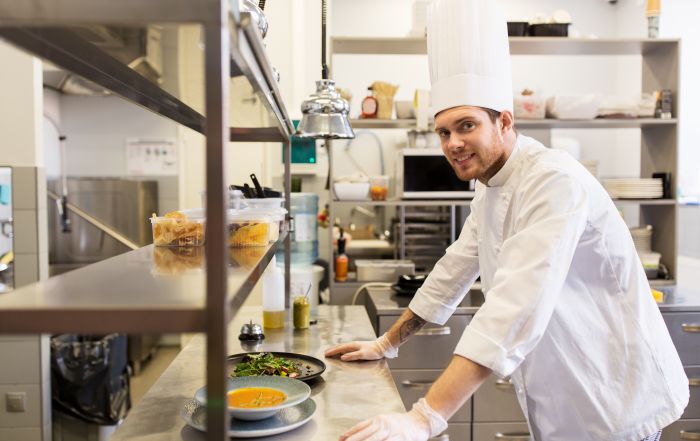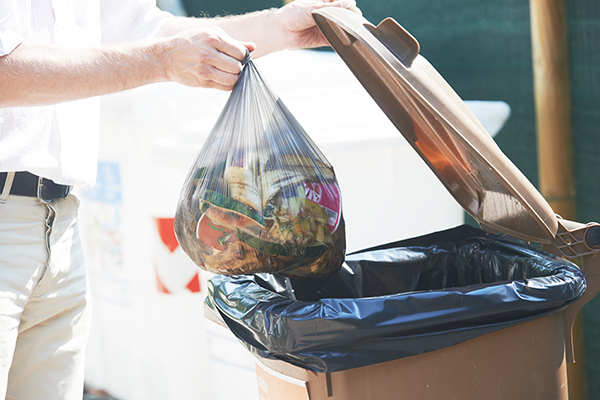Maintaining Food Safety Standards Amid Seasonal Turnover
Across the country, summer seems to bring on more than just an influx of business in foodservice operations. It also tends to bring an influx and an exodus of employees. As seasoned employees head out for vacations or move on, new hires and seasonal staff fill in, often with minimal experience. This constant churn can create gaps in food safety practices at exactly the time when warm weather increases the risk of foodborne illness. Being ready for the staffing challenges of summer all comes down to proactive planning, smart training, and reinforcing that food safety culture we often talk about.
When new employees are coming in quickly, your food safety training process needs to be efficient, consistent, and easy to deliver. Create a structured onboarding checklist that includes short, clear training on critical food safety topics: temperature control, cross-contamination, handwashing, and cleaning procedures. Make sure you have solid, job-specific SOPs (Standard Operating Procedures) for food handling that you can share with new hires. Then, once they are hired and trained, make sure you follow up to confirm they understand your policies and procedures by using a brief on-the-job quiz or hands-on demonstration.
Use visual aids, such as posters or infographics, in prep areas to reinforce key practices. Better yet, build a short training video or find your favorite video online to use and show it to new hires on their first day. If you’re not an instructor for one of the several food safety training programs available on the market, consider becoming one – they have videos and other resources that you can build into your training program. Remember that with any training, repetition is key. This is especially true for new hires who are consuming a lot of information in the first few weeks on the job. Don’t assume a one-time message will stick.
The more complicated your systems, the easier it is for something to slip. Look for ways to streamline your processes, such as using color-coded cutting boards and utensils to prevent cross-contamination. I can’t tell you the number of foodservice operations where I have seen these boards in use, but the color doesn’t really mean anything. In other words, they had good intentions by purchasing the color-coded cutting board system but didn’t really implement the use of the colors within their system, and thus, anything goes! Place thermometers and sanitizing logs in visible, easy-to-access locations. Don’t create artificial barriers that will prevent new hires and seasoned employees from doing the food safety tasks you expect. After all, when tools and expectations are clear and accessible, it’s much easier for new staff to succeed.
…By reinforcing that everyone plays a role, you make food safety a shared value, not just a task to be completed.
In a fast-paced kitchen, waiting until a six-month or yearly performance evaluation to address a food safety mistake is too late. Instead, designate a shift supervisor or manager to spot-check food safety practices throughout the day—handwashing, holding temps, sanitizer buckets, etc. Correct gently and immediately. Use mistakes as teaching moments, not just compliance failures.
Pair new hires with experienced team members who can model and reinforce good practices. These mentors can help answer questions, catch mistakes early, and build confidence in new employees.
If you have been working on creating that food safety culture where food safety is part of every shift, not just a training module, training for food safety becomes a bit less problematic. Some ways you can start doing this or continue to reinforce this are by beginning each shift with a quick safety huddle, a two-minute reminder of one key food safety point. Always encourage staff to speak up when they see something unsafe; all team members play a role, not just managers and supervisors. And be sure to include food safety behaviors in performance feedback, even for seasonal staff. By reinforcing that everyone plays a role, you make food safety a shared value, not just a task to be completed.
The reality of summer staffing challenges doesn’t have to mean lower food safety standards. With a proactive process, clear communication, and a strong culture, your team—new and “old” can keep serving safe food all year long. Risk Nothing.
READ MORE POSTS
Getting Your Playbook for Food Safety Organized
As anyone who has ever worked in a foodservice operation knows, from the time food is received in your establishment to the time it is served to your customers, following proper food safety practices is crucial. What many don’t often think about is this time really should extend from the time the manager places their orders with their suppliers (including which purveyors you utilize), through the time the food is consumed – even if that consumption occurs off your premises and days after the original order was picked up by the guest. This is something that has certainly been highlighted by the pandemic as customers across the nation are utilizing take-out, curbside to go, and third-party delivery options more so now than ever before.
Getting Started with Building the Infrastructure
Hopefully in our first January blog, we convinced you of the importance of establishing an infrastructure within your operation to support a safe food culture. So, how does one go about doing this? Well, like any major project, break it into small bites. In our opinion, having a written guide for employees that documents expectations related to food safety basics of employee health and hygiene, temperature controls, and cleaning and sanitizing is the first step. Having this documentation serves as a reference for training and helps fulfill the mission of most foodservice operators which is to serve safe, quality food.
Food Safety Resolutions for the New Year
Finally, 2020 is in our rearview mirror and we can all turn the page to 2021! Resolutions for the new year might be more of the same from prior years (lose weight, exercise more, less screen time, etc.) OR you may have identified new practices to implement in your operation. If the latter, likely goals included some practices related to food safety – especially given the turmoil of 2020 and heightened concern by customers. It is our philosophy that attention to safe food handling practices is a win-win for any operation because of the direct relationship between food safety and food quality, which in turn leads to customer satisfaction. This past year has also demonstrated that attention to safety can affect the bottom line. Thus, the topic of our first SafeBites webinar for 2021 is on the topic of the return on investment of food safety, it is scheduled for January 20, so register now and please plan to attend.
To Toss or Not to Toss? That is the question.
Our first blog for the month emphasized the basic safe food practices needed to keep you and your guests healthy (and happy!), especially during these times of COVID. The impact of foodborne illness can range from an uncomfortable few days to hospitalization or death. Foodborne illness IS preventable and the steps taken to keep food safe also maintain quality of food, and ultimately profitability. Think of attention to food safety as part of quality control and a win-win business strategy. Knowledge about food safety can be helpful when controlling costs as making wise decisions when determining the fate of unserved food can affect the bottom line.










